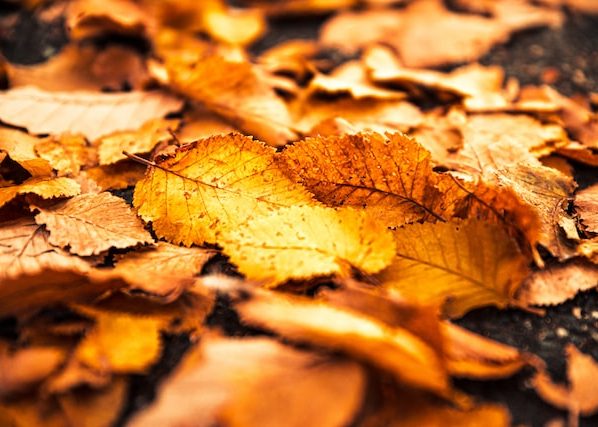Your fall checklist for winter garden prep
By Danielle Rose
Summer is officially over, and although the changing leaves are stunning to watch, as they drop we’re left with a growing to-do list in the garden. First frost is generally a good guideline for completing any unfinished fall garden prep (and some can even wait until after), but the more that can be completed beforehand, the better. Our autumn checklist of items that absolutely need to be done before the first hard freeze, courtesy of Glenwild Garden Center, will help create a yard that’s beautiful and healthy come the spring thaw.
Overwintering container gardens
If your houseplants or tropicals are still outside, now is the time to bring them in if you want to save them (and haven’t already done so). First, deadhead the flowers and remove any yellow or brown leaves. Wipe (or hose) down the pots and remove dirt or debris that has collected on top of the soil. If repotting isn’t necessary, fertilize or gently topdress with a layer of fresh soil or a sprinkling of compost. Don’t overdo it, though, as container plants can’t accommodate the same amount of compost or fertilizer as those in an outdoor planting bed.
You may want to protect container perennials if they’re potbound, or if the pot might crack or break over the winter. The University of New Hampshire Cooperative Extension recommends keeping borderline-hardy perennials for our zone in a garage or other unheated room with a temperature range of 30 to 40 degrees. The idea is to keep the roots alive, but allow them to go dormant. Water sparingly (just enough to keep the soil from drying out completely), as you do not want the roots to rot, or to encourage new growth before spring. Alternatively, pots can be completely buried in the yard to protect the roots.
Container vegetables, like tomatoes that are doing well, may stay in their containers for as long as they are producing. Try moving them to a sunnier location if possible to compensate for the shorter days and to provide some additional warmth. If needed, they may be covered at night until the last of their fruits are ready. Pluck all the fruit before the first hard frost, even the green ones… they’ll ripen on your counter. Once the plant has died back or been damaged by frost, remove it from the pot and store the pot for next season.
Fall composting and fertilization
Turning your compost pile is an important part of fall garden prep. If it’s ready, clear the bin and spread that rich compost over perennial beds before filling the bin with fresh leaves. But don’t clear the bin completely. Leave some old compost, to assist in breaking down new material you’re about to throw in. According to a study in the International Journal of Recycling Organic Waste, compost is full of microorganisms necessary to jumpstart winter decomposition.
Although topdressing your plants with compost can help improve the soil for next year, do not fertilize in the fall. Instead, use a light layer of compost around any new plantings. Mulching, either with new leaves or a standard mulch, can help reduce stress on tender roots from freezes and thaws which can be common throughout the winter months in our area.
Established shrubs on the other hand, can be gently fertilized around Thanksgiving with a slow release granular fertilizer if desired. Do this once the ground is close to frozen. The slow-release granular won’t actually reach the roots until springtime (which is what you want) and won’t promote new growth in the fall (which you don’t want).
Leaf clean up and fall garden prep
Leaf clean up need not be an all-or-nothing affair. When a yard is scrupulously cleaned of all fall detritus, beneficial insects and other essential microorganisms can be lost. On the other hand, blankets of leaves left over winter can hold fungus, especially on the lawn. Since grass, in particular, is susceptible to fungus, fallen leaves should be removed or mowed down fine (if possible) before winter arrives. The trick is to find the right balance. Finely chopping leaves with a mower, mulcher or chipper can help create that balance according to a recently updated article in Horticulture Magazine.
Start by removing leaves from pathways and some flower beds. Perennial, shrub and tree beds may benefit from a layer of leaves, however. It’s even better if some of these leaves can be chopped first, so they will decompose and more readily provide nutrients. Don’t clear out the beds completely, though. Layering chopped leaves over some fallen leaves can help preserve the beneficial organisms without fostering fungal growth.
Cutting back
Jodie at Glenwild Gardens prefers to leave perennials and grasses as they are, as they offer seed and shelter for overwintering birds. They also provide an element of visual attraction for the winter. Do not stop weeding however, as seed heads have matured by now. Removing unwanted plants can prevent the seeds from dispersing, and result in less weeds to pull next year.





 Image by Natalie Parham
Image by Natalie Parham  Image by Natalie Parham
Image by Natalie Parham